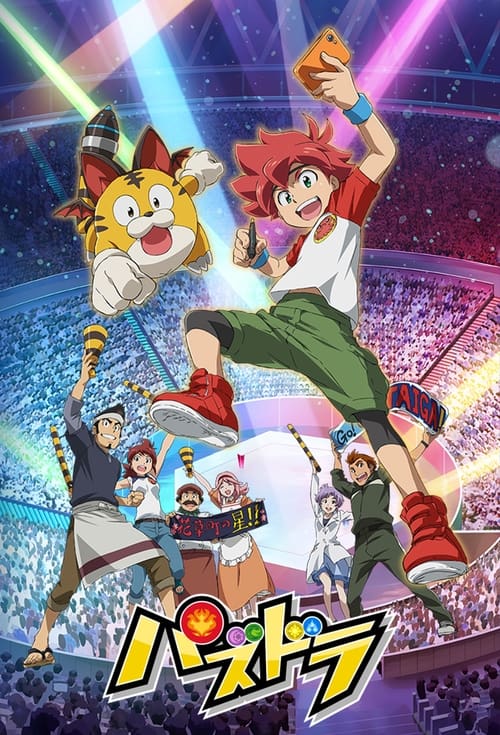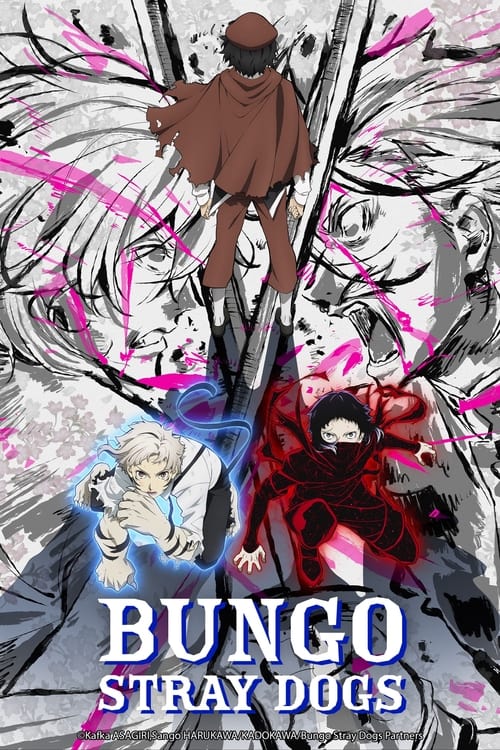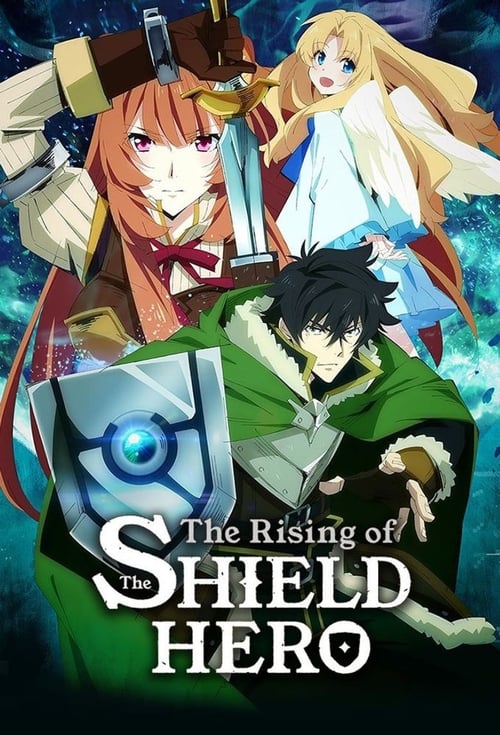
Ask Your Own Question
What is the plot?
In the opening scene of "Episode 3," the camera pans over a dense jungle, filled with the sounds of wildlife. The protagonist, Zambi, is seen navigating through the thick underbrush, his expression a mix of determination and anxiety. He is on a quest to find his missing sister, who disappeared under mysterious circumstances. As he moves deeper into the jungle, flashbacks of their childhood together play in his mind, highlighting their close bond and Zambi's protective nature.
Zambi encounters a group of local villagers who are initially wary of him. He approaches them cautiously, trying to communicate his intentions. The villagers, led by a stern elder, express their distrust, believing that outsiders bring trouble. Zambi, feeling the weight of their suspicion, shares a heartfelt story about his sister and his desperate search for her. The elder, moved by Zambi's sincerity, reluctantly agrees to help him, revealing that they have seen a stranger in the area who might have information.
The scene shifts to a dark cave where the stranger, a mysterious figure named Kato, is introduced. Kato is shown in a dimly lit space, surrounded by artifacts and remnants of past encounters. He is portrayed as enigmatic and somewhat menacing. The villagers inform Zambi that Kato has been seen near the cave, and they warn him to be cautious. Zambi, fueled by hope, decides to confront Kato, believing he holds the key to finding his sister.
As Zambi approaches the cave, the atmosphere becomes tense. He hears faint sounds echoing from within, and his heart races. He steels himself and enters the cave, where he finds Kato sitting calmly, seemingly unfazed by Zambi's presence. The two engage in a tense dialogue, with Zambi demanding to know what Kato knows about his sister. Kato, with a sly smile, teases Zambi, hinting at dark secrets and the dangers that lie ahead.
The conversation escalates when Kato reveals that he has seen Zambi's sister but does not provide any concrete information. Instead, he challenges Zambi to prove his worthiness by completing a dangerous task. Zambi, feeling cornered but resolute, accepts the challenge, knowing that he has no other choice if he wants to find his sister. Kato hands him a map leading to a hidden location deep in the jungle, warning him of the perils that await.
The next sequence shows Zambi preparing for the task. He gathers supplies from the villagers, who offer him tools and advice, showcasing their growing support for him. Zambi's internal struggle is evident as he grapples with fear and determination. He reflects on his sister's bravery and recalls moments when she encouraged him to be strong. This memory fuels his resolve as he sets off into the jungle once more, following the map.
As Zambi ventures deeper into the jungle, he faces various obstacles, including treacherous terrain and wild animals. Each challenge tests his physical and mental limits. He recalls his sister's laughter, which motivates him to push through the pain and exhaustion. The cinematography captures the lush beauty of the jungle juxtaposed with Zambi's struggle, emphasizing his isolation and determination.
Eventually, Zambi arrives at the location marked on the map, a clearing filled with ancient ruins. The atmosphere is eerie, and he senses that he is not alone. As he explores the ruins, he discovers clues that suggest his sister may have been here recently. However, he is suddenly ambushed by a group of armed men who emerge from the shadows, revealing themselves as mercenaries working for Kato.
A tense confrontation ensues. Zambi, outnumbered, fights back with a mix of agility and desperation. The fight is choreographed with intense physicality, showcasing Zambi's resourcefulness as he uses the environment to his advantage. He dodges attacks, grabs weapons from fallen mercenaries, and ultimately manages to overpower them one by one. The scene is filled with close-ups of Zambi's determination and the mercenaries' surprise at his fighting skills.
After the fight, Zambi is left breathless and battered but victorious. He searches the fallen mercenaries for information and finds a piece of paper with a location written on it--another clue about his sister's whereabouts. As he catches his breath, he realizes that he is closer than ever to finding her, but the weight of the danger ahead looms over him.
The episode concludes with Zambi standing at the edge of the clearing, looking at the new location on the paper. The camera zooms out, showing the vastness of the jungle around him, symbolizing the challenges that still lie ahead. Zambi's expression is a mix of hope and trepidation as he prepares to continue his quest, determined to uncover the truth about his sister and the dark forces at play.
What is the ending?
In the ending of "Zambi," Season 1, Episode 3, the main characters face a climactic confrontation that tests their loyalties and reveals hidden truths. The episode concludes with a tense standoff, leading to a significant decision that alters their relationships and sets the stage for future conflicts.
As the episode unfolds, we find ourselves in a dimly lit warehouse, where the air is thick with tension. The main characters, Zambi, a determined and resourceful leader, and his close ally, Tasha, are cornered by a rival group seeking to undermine their efforts. Zambi's heart races as he assesses the situation, knowing that their survival hinges on quick thinking and unity.
Scene by scene, the tension escalates. Zambi and Tasha exchange worried glances, their bond evident as they silently communicate their next moves. The rival group, led by a cunning antagonist named Marcus, enters the warehouse, their presence a stark reminder of the stakes at hand. Marcus taunts Zambi, revealing secrets that shake the foundation of their friendship. The emotional weight of betrayal hangs heavy in the air, as Zambi grapples with the implications of Marcus's words.
In a moment of desperation, Tasha steps forward, attempting to negotiate a truce. Her voice trembles with a mix of fear and determination, showcasing her internal struggle as she fights for peace amidst chaos. However, Marcus is unyielding, and the situation quickly spirals into a confrontation. The warehouse becomes a battleground, with Zambi and Tasha fighting not just for their lives, but for the ideals they stand for.
As the fight intensifies, Zambi's leadership qualities shine through. He rallies his allies, urging them to stand firm against the encroaching threat. The choreography of the fight is visceral, with each blow and dodge reflecting the characters' emotional stakes. Tasha, fueled by her loyalty to Zambi, fights fiercely, her determination evident in every movement.
In the climax of the episode, Zambi faces Marcus one-on-one. The confrontation is charged with unresolved tension, as Zambi confronts the betrayal and the weight of their shared history. The dialogue is sharp, filled with accusations and revelations that peel back layers of their relationship. Ultimately, Zambi makes a pivotal choice, opting for mercy over vengeance, which surprises both Marcus and Tasha.
The episode concludes with Zambi and Tasha emerging from the warehouse, battered but resolute. They share a moment of understanding, their bond strengthened by the trials they faced. Zambi's decision to spare Marcus sets a new tone for their journey ahead, hinting at the complexities of morality and leadership. As they walk away, the camera lingers on their silhouettes against the backdrop of the warehouse, symbolizing the challenges that lie ahead and the uncertain path they must navigate together.
In summary, the fates of the main characters are intertwined as they confront their pasts and the choices that define their futures. Zambi emerges as a leader willing to embrace compassion, while Tasha stands by his side, ready to face whatever challenges await them. Marcus, on the other hand, is left to grapple with the consequences of his actions, setting the stage for potential future conflicts. The episode closes on a note of hope and uncertainty, encapsulating the essence of their journey.
Is there a post-credit scene?
In "Episode 3" of Zambi, there is indeed a post-credit scene that adds an intriguing layer to the narrative. As the credits roll, the screen fades to black before transitioning to a dimly lit room filled with various artifacts and tribal masks. The camera slowly pans across the room, revealing a large, intricately carved totem standing in the center.
Suddenly, a shadowy figure enters the frame, their face obscured by a hood. They approach the totem with a sense of reverence, running their fingers along its surface as if seeking a connection. The atmosphere is thick with tension, and the sound of a heartbeat echoes softly in the background, heightening the suspense.
As the figure whispers an incantation, the totem begins to glow faintly, illuminating the room with an eerie light. The camera zooms in on the figure's hand, which reveals a small, glowing stone that pulses in rhythm with the heartbeat. The scene conveys a sense of foreboding, suggesting that this figure holds a significant key to the unfolding events in the series.
The scene ends abruptly, leaving viewers with a lingering sense of mystery and anticipation for what is to come, hinting at deeper connections to the overarching plot and the supernatural elements that permeate the world of Zambi.
What challenges does Zambi face in Episode 3?
In Episode 3, Zambi faces significant challenges as he navigates the complexities of his new environment. He struggles with the expectations placed upon him by the community, which sees him as a leader despite his own insecurities. The pressure mounts when he is confronted by rival factions that threaten the peace he is trying to establish.
How does Zambi's relationship with his mentor evolve in this episode?
Zambi's relationship with his mentor deepens in Episode 3 as they engage in a series of intense discussions about leadership and responsibility. His mentor pushes him to confront his fears and embrace his role, leading to moments of tension but ultimately fostering a stronger bond as Zambi begins to understand the weight of his responsibilities.
What internal conflict does Zambi experience in this episode?
Throughout Episode 3, Zambi grapples with an internal conflict between his desire for acceptance and his fear of failure. He is torn between wanting to prove himself to the community and the nagging doubt that he may not be capable of leading them effectively, which leads to moments of self-reflection and vulnerability.
What pivotal event occurs that changes the course of Zambi's journey?
A pivotal event in Episode 3 occurs when Zambi witnesses a violent confrontation between rival groups. This incident not only heightens the stakes for him but also forces him to take a stand, ultimately leading him to make a crucial decision that will impact his journey and the community's future.
How do the other characters react to Zambi's decisions in this episode?
The other characters have mixed reactions to Zambi's decisions in Episode 3. Some express admiration for his courage, while others are skeptical and question his judgment. This division creates tension within the group, highlighting the challenges Zambi faces in uniting them under his leadership.
Is this family friendly?
"Zambi," season 1, episode 3, titled "Episode 3," contains several elements that may be considered objectionable or upsetting for children or sensitive viewers.
-
Intense Emotional Moments: The episode features scenes where characters experience significant emotional distress, including fear and sadness, which may be overwhelming for younger audiences.
-
Conflict and Tension: There are moments of conflict between characters that may involve raised voices or confrontational behavior, which could be unsettling for some viewers.
-
Themes of Loss: The episode touches on themes of loss and grief, which may resonate deeply and evoke strong emotions.
-
Mild Violence: While not graphic, there are instances of mild violence or threatening behavior that could be alarming to sensitive viewers.
-
Dark Imagery: Certain visual elements may include darker themes or imagery that could be frightening for younger children.
These aspects should be considered when determining if the episode is suitable for a family-friendly viewing experience.











































